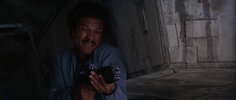Hi Gang,
As many of you know I am building a 1:1 scale replica of the Millennium Falcon Cockpit. After many many years I have FINALLY reached the point where I have added the exterior skin using a material called Fiberglass Reinforced Panels (RFP). The RFP is great! On one side it's textured and sealed. The backside is a unfinished smooth plastic surface - that's the surface I'm working with. I did NOT adhere the panels to the actual cockpit frame. They are resting in place by plastic trim pieces that allow the panels to slide in and out of position. The basic shape of the cockpit is a tube. So, if I remove a panel it will naturally go back to its original flat position.
For those who haven't seen the build click the link to the page with the FRP skin

I have a question re: EVA Foam. I want to permanently adhere 1/4" foam sheets (cut to fit) to the FRP that will resemble the Millennium Falcon's armor plating. 1) The material is very light weight and 2) I can easily paint and weather the foam. QUESTION: Will the foam hold up and stay adhered to the panel if I need/have to remove the FRP from its curved position and the panel lays flat? I know someone here has all the answers, concerns, pros, cons, etc!
See the below photo for an example of the armor plating.
Can anybody help me? : )
As many of you know I am building a 1:1 scale replica of the Millennium Falcon Cockpit. After many many years I have FINALLY reached the point where I have added the exterior skin using a material called Fiberglass Reinforced Panels (RFP). The RFP is great! On one side it's textured and sealed. The backside is a unfinished smooth plastic surface - that's the surface I'm working with. I did NOT adhere the panels to the actual cockpit frame. They are resting in place by plastic trim pieces that allow the panels to slide in and out of position. The basic shape of the cockpit is a tube. So, if I remove a panel it will naturally go back to its original flat position.
For those who haven't seen the build click the link to the page with the FRP skin

I have a question re: EVA Foam. I want to permanently adhere 1/4" foam sheets (cut to fit) to the FRP that will resemble the Millennium Falcon's armor plating. 1) The material is very light weight and 2) I can easily paint and weather the foam. QUESTION: Will the foam hold up and stay adhered to the panel if I need/have to remove the FRP from its curved position and the panel lays flat? I know someone here has all the answers, concerns, pros, cons, etc!
See the below photo for an example of the armor plating.
Can anybody help me? : )
Attachments
Last edited:

